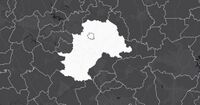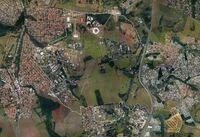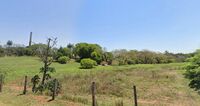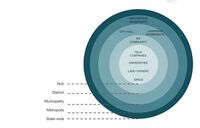LED2LEAP 2021 - Brazil Team
>>>back to working groups overview
For help with editing this Wiki page use this link.
For assignments and key readings use this link.
| Area | HIDS | |
| Place | Barão Geraldo - Campinas | |
| Country | Brazil | |
| Topics | Landscape Democracy | |
| Author(s) | Haroldo Dias and Tiffany Liu | |
Landscape Democracy Rationale
Built upon the right of landscape, the notion of 'Landscape Democracy' has the goal to be inclusive by exploring its relationship with spatial justice.
It brings up discussions concerning democratic participation in landscape assessment, how urban spaces can become more inclusive towards a community?
Location and Scope
Phase A: Mapping Your Community
Welcome to your community and its landscape
- Located in the district of Barão Geraldo within the Campinas municipality, state of São Paulo, Brazil
- Transitional location of the urban perimeter and rural areas
- Large concentration of universities with a national scope
- Latin America's first synchrotron light source in the area
- Part of Campinas' rural heritage (coffee farms)
Groups of Actors and Stakeholders in Your Community
- Key Actors: Local Residents, Universities, District Administration, Municipality, Landowners, Metropolitan administration;
- Primary Actors (Schools, Students, Community leaders, Farmers;
- Secondary Actors (Small businesses, potential tourists;
Currently the most visible actors are the university and the municipality in the planning process. There has been some discussions and activities with some key and primary actors, but due to the pandemic, it wasn't possible to actively engage the local citizens, former recorded city meetings and research papers were used in order to make assumptions about local perspectives.
Relationships Between Your Actors and Groups
- Based on previous discussions, stronger and organized groups have had bigger influence in the project compared to smaller, local groups.
- Groups have very different mindsets of how they envision the future of the area
- Real state speculation has been pressuring new developments, largely consisted of gated communities with no ties with their surroundings
Summary of Your Learnings from the Transnational Discussion Panel
- insert text here
Theory Reflection
- insert text here
References
- insert text here
Phase B: Democratic Landscape Analysis and Assessment
Your Name and Partner's Name Correspondence
- ''insert text here''
Your Name and Partner's Name Correspondence
- ''insert text here''
Your Name and Partner's Name Correspondence
- ''insert text here''
Your Name and Partner's Name Correspondence
- ''insert text here''
Your Name and Partner's Name Correspondence
- ''insert text here''
Phase C: Collaborative Visioning and Goal Setting
The Scene in Your Story of Visioning
- insert text here
The Actors in Your Story of Visioning
- insert text here
The Story of Visioning
- insert text here
Reflect on Your Story of Visioning
- insert text here
Phase D: Collaborative Design, Transformation and Planning
Your Prototyping Action
- insert text here
The Evolution of Your Prototyping Action
- insert text here
The Plan Behind Your Prototyping Action
- insert text here
The Realization of Your Prototyping Action
- insert text here
Reflect on Your Prototyping Action
- insert text here
Phase E: Collaborative Evaluation and Future Agendas
Collaborative Evaluation and Landscape Democracy Reflection
- insert text here
The Actors in your Collaborative Evaluation
- insert text here
Reflection on the Online Seminar
- insert text here
Reflection on the Living Lab Process
- insert text here
Your Living Lab Code of Conduct
- insert text here
Process Reflection
- insert text here






















